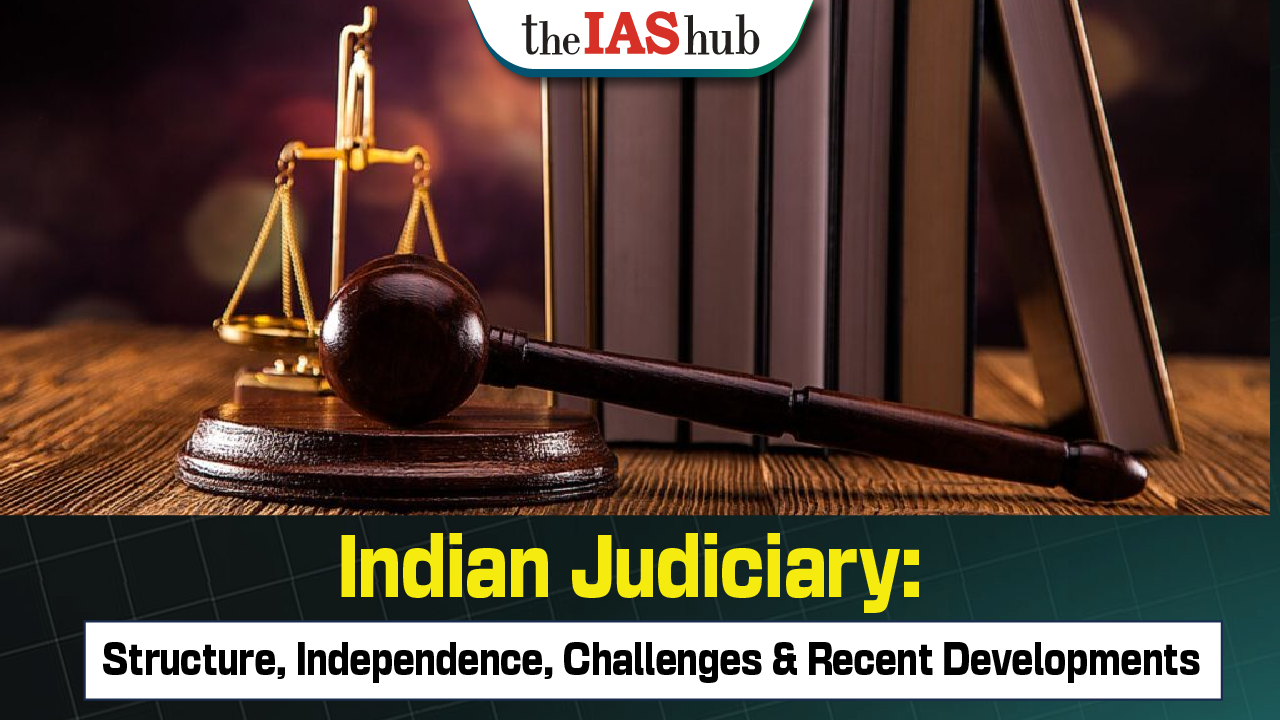Explore the structure and independence of India’s judiciary, major issues like case backlogs, judicial diversity, and sealed cover jurisprudence, along with recent tensions between the judiciary and executive.


Among the noble aims and objectives of the Constitution, the founding fathers accorded the highest place to Justice. Most significantly, Justice is placed higher than the other principles of Liberty, Equality and Fraternity.
Here is the Structure of Indian Judiciary;
There is an integrated judiciary as established by the Indian Constitution with the Supreme Court at the top and High Courts below it.


Public trust depends on the judiciary's perceived independence, justice, and transparency. Lack of transparency in the selection, appointment, and disciplinary process for judicial misbehavior can cast doubt on the judiciary's credibility.
Montesquieu introduced the "separation of powers" in the 18th century. He considered the Legislature, Executive, and Judiciary the three branches of government. This is a system adopted in India as well.
|
Recent Developments:
|
Reducing friction between the judiciary and executive in India requires a balanced approach that upholds the independence of the judiciary while allowing for transparent and accountable judicial appointments. It's crucial to engage in open dialogue and reform, ensuring respect for constitutional principles and the separation of powers to maintain democratic integrity.


Refine your answer writing skills and elevate your UPSC preparation with personalized support and expert feedback.
Fill out the form to get started with the program or any other enquiries !








Are you dreaming of becoming an IAS officer? Then, IAShub can be your best guide. It is one of the Best IAS Coaching in Delhi. Many students who want to clear the UPSC exam join IAShub for learning. The institute gives both online and offline classes. Their teachers are experienced and helpful. They easily explain every topic. Students also get notes, tests, and tips to do well in the exam.
IAShub is in Delhi and is trusted by many UPSC students. It offers coaching for every part of the UPSC exam – Prelims, Mains, and Interview. The classes are simple and easy to understand. The teachers are experts and guide students in the right way. IAShub is also known for its helpful notes, test series, and answer-writing practice. IAShub is the best coaching in Delhi and also gives UPSC Online Classes. This helps students from any place in India to learn. The online classes are live and also recorded. So, students can watch them anytime. These classes cover the full UPSC syllabus.
Here are some important services provided by IAShub:
The UPSC Civil Services Exam has three parts:
This exam is tough, but with the right guidance, it becomes easy to manage. Students must study smart and stay regular.
IAShub supports students from the beginning to the end. It gives the right books, tests, and notes. The classes are easy to follow, and the teachers are always ready to help. Students get personal doubt sessions too. The test series and answer checking help students learn where they need to do better. Also, free study materials save time and money.
IAShub also guides students during the final stage – the interview. Experts take mock interviews and give useful tips. This full support makes IAShub one of the best IAS coaching in Delhi.